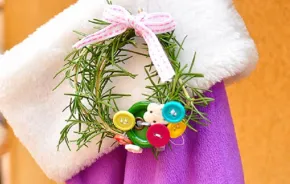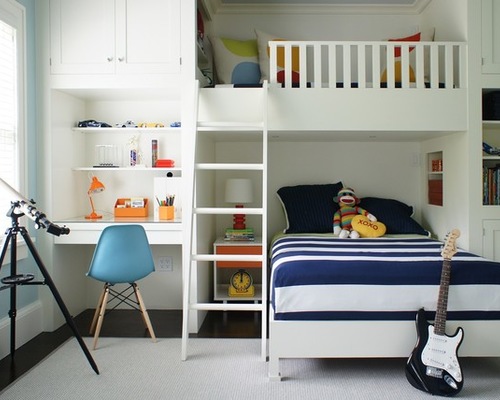
A shared sibling bedroom is often a necessity. One of the most challenging goals in designing a kids’ bedroom is finding enough space in one room for twice as many belongings and for larger families, sometimes three times as many items. Where to put all the clothing, shoes, toys and school gear?
Read on for a few solutions to help you create the storage that your little ones need for a happy, functional room.
1. Go for bunks
Bunk beds are a classic shared bedroom choice because they are a brilliant solution to keeping a room as spacious as possible. Not only do bunk beds efficiently use vertical space — leaving essential floor space free for movement, play and additional furniture — but they also give you the ability to create extra storage solutions around, or within, the bed structure.
For instance, you might try placing storage shelves or cubbies up high near the top bunk. Alternatively, look for modular or built-in bunk beds that provide storage — drawers or cubes — within the bed frame itself. Also, you can hang decorative items from the bunks for additional storage. Consider hanging baskets, bags and hooks off the bunks for stashing everyday items.
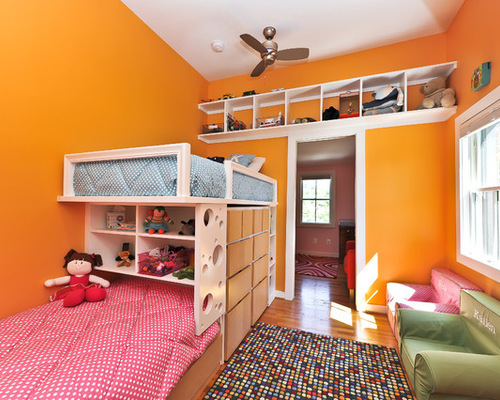
2. Choose double-duty pieces
Multifunctional furniture is a must in a small shared bedroom, so look for pieces that can perform at least two tasks. Toy chests are excellent storage options that can be placed at the foot of a bed, under a window or against a wall. To create a second functional use, top a chest with cushions to turn it into a seat at a play table or in a reading corner.
Similarly, a well-designed wall unit can be used not only to house books, clothes and knickknacks, but also as a dresser and even desk for each child. Also, some chairs have pull-up seats that reveal a small storage compartment — every little bit can help. As an added bonus, many children find these hidden spaces delightful.
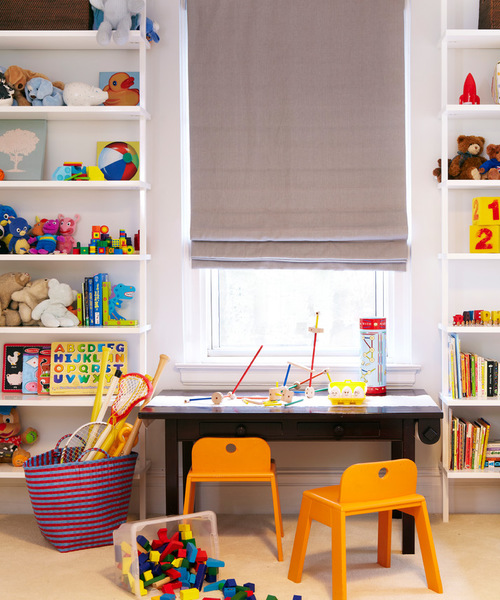
3. Shelve it
Shelves are a terrific solution for toy organization and storage. Streamlined in design, shelving is typically relatively shallow, meaning it won’t bulk up the room. Shelves can go above dressers, desks or even the bedroom door for infrequently used items. For younger siblings, consider placing shelves lower on the wall where shorter kids can easily reach their own books and toys. Put shelving higher for taller kids to efficiently use the vertical space.
In addition to their functional role, shelves are also a cost-effective way to add colorful wall decor to your kids’ room. You might select shelving in different sizes and colors, and artfully arrange the shelves on a wall. For a personalized touch, curate shelves for each sibling — perhaps using each child’s favorite color for his or her personal shelf space. This will customize the room and create a stylish feature.
When filling the shelves, think about coordinating color, shape and type of object. Not only will this be visually appealing, but it will also make it easier for your kids to remember where objects belong.
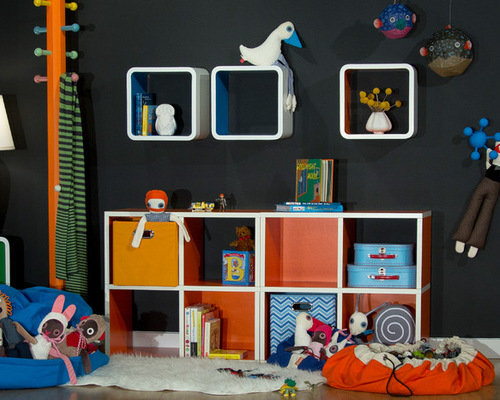
4. Get cubed
Storage cubes are a fantastic option for a shared children’s bedroom. Today’s cubed pieces have come a long way from the plain white squares of days gone by. The market has now created a range of styles, from colorful stacked cubbies to rounded cubes that can be hung on a wall. One of these styles is sure to make a splash in your children’s room.
Cubes are great because they are flexible, and because they are ideal for incorporating bins or baskets for each child and their objects. The portability and assigned use of the baskets is helpful when teaching your kids to clean up. Tommy’s stuffed animals go in the blue basket. Sarah’s dolls go in the yellow basket. In a shared bedroom, assigning defined spaces is crucial for each child’s budding personality.
Get creative when selecting your cubed storage — you don’t have to blow the budget on expensive pieces. Milk crates are stackable, portable, inexpensive and come in an assortment of colors. Similarly, wooden crates can be repainted in a customized color for a DIY look.
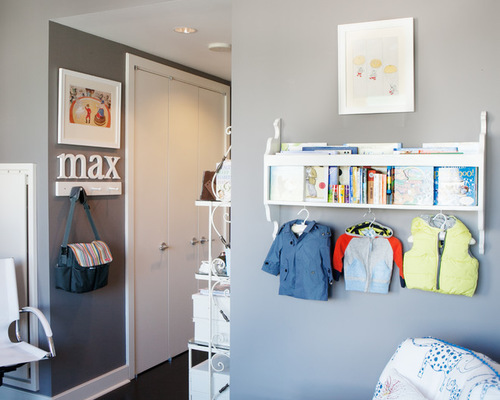
5. Get hooked
Hooks allow you to organize and decorate at the same time. They also make whatever is hung easier for your kids to find.
Thanks to their petite size, hooks can be an efficient storage solution. Their small volume means they can go on a wall that couldn’t otherwise accommodate a piece of furniture. An awkward space in a bedroom or an unused portion of a closet wall can be an excellent place to put hooks. Try hanging fabric storage bags or sacks on each hook for storing gloves or smaller toys.
You may want to find hooks that work with a theme in your kids’ bedroom. Today’s hooks come in a variety of designs, including safari animals, trains and stars. Designate an animal or a color of star for each child. Alternatively, hooks customized with a name are a great way to carve out a defined space for each child.
6. Use the space under the bed
The large, flat space under your children’s bed is begging to be used. To free up closets and drawers, consider swapping out your kids’ seasonal items and placing them under the bed. If the beds have skirts or concealed under-the-bed spaces, you could choose cost-efficient plastic storage bags since the containers won’t be seen.
If your under-the-bed storage will be visible, consider rollaway drawers. They come in a variety of finishes and colors that can blend in with the bed. They’re easily accessible to children, making them ideal for everyday storage of toys and clothes.
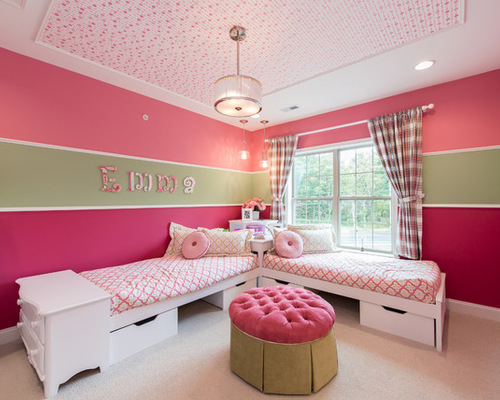
7. Max out the closet
In a shared bedroom, the closet is a valuable storage container. But you still need to use it wisely. Maximize every inch of your kids’ closet by acting as your own closet designer and approaching this challenge methodically.
First, calculate the amount of hanging space you’ll need for each child. Categorize the hanging space into short or long. Once you have this information, you can decide where to place each hanging rod for the appropriate length and width. Add shelving, pullout baskets or floating drawers that get attached to the wall on every unused portion in between the hanging rods. Don’t forget to install hooks on unused walls and even the back of the door.
If you have the space to organize the closet for more than one child, divide it from top to bottom and create a mirror-image design on either side. This will give each child a designated space and help them learn to clean up and put away their clothes.
8. Pare down
Less is more when it comes to a children’s room. Embrace this concept and edit what your kids have outgrown or simply don’t need. Try to pare down every six months or so. You’ll be surprised how many unnecessary items you’ll be able to donate or discard. And your children’s room will feel uncluttered, lighter and balanced.










